Ponce de Leon Inlet Lighthouse & Museum
Introduction
Text-to-speech Audio
Images
Activated on November 1, 1887, the tower is considered to be one of the museums most important artifacts.

The tower from 1887-2007.
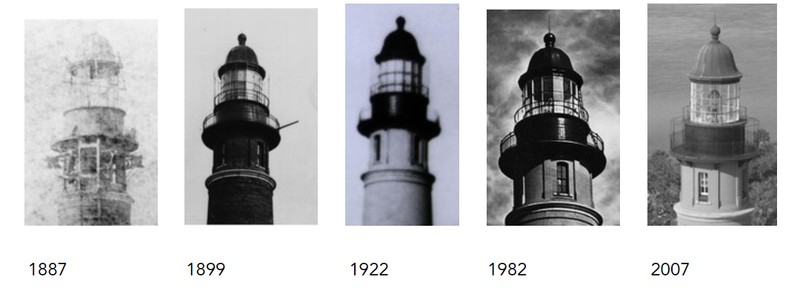
The six order of lenses, now in an exhibit.
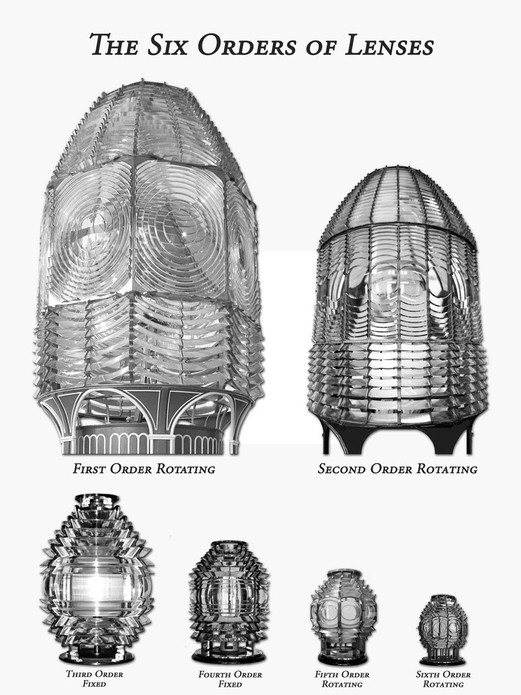
The lighthouse holds much significance to history.
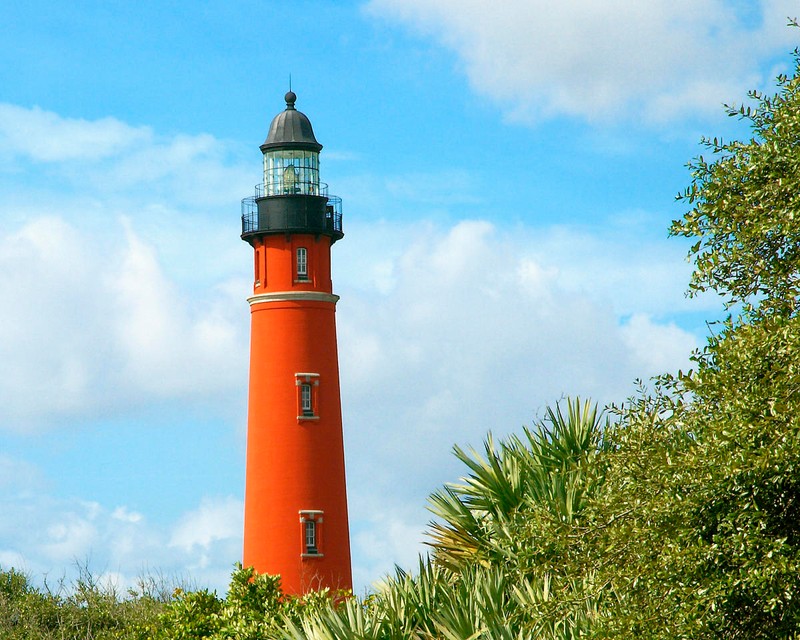
Map of the museum grounds.

View of the Ponce de Leon Inlet lighthouse and museum.
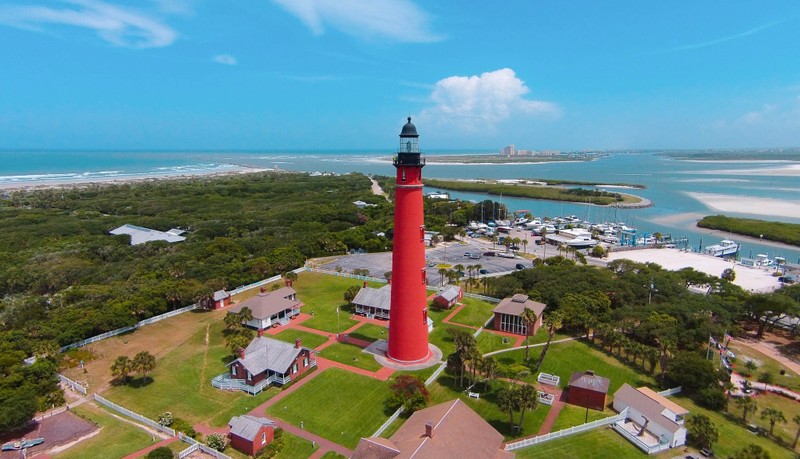
The Woodshed Theater; when constructing the lighthouse, an outbuilding combining both a woodshed and a privy was built for each of the three keepers' dwellings, this is the second keepers'.
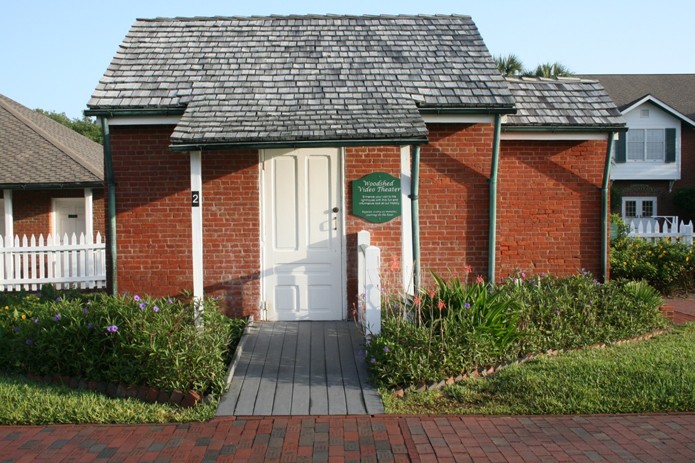
Oil Storage Building; located outside the station's picket fence and far enough away from the tower and dwellings to prevent disaster if the kerosene were to somehow ignite.

Principal Keeper's Dwelling
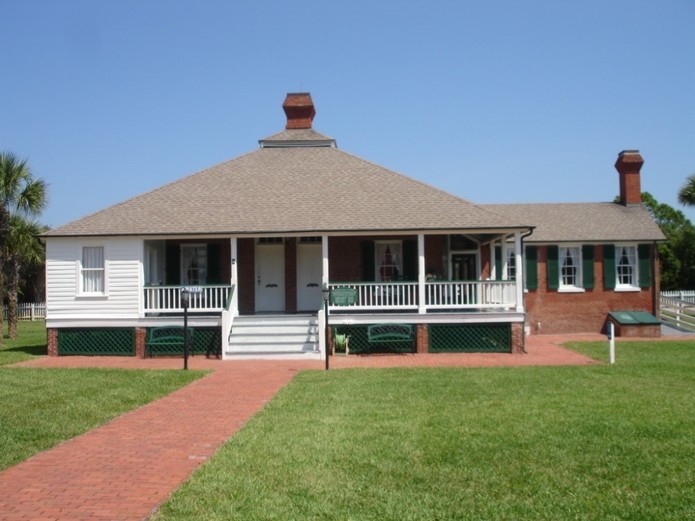
Location of Ponce de Leon Inlet's lighthouse.
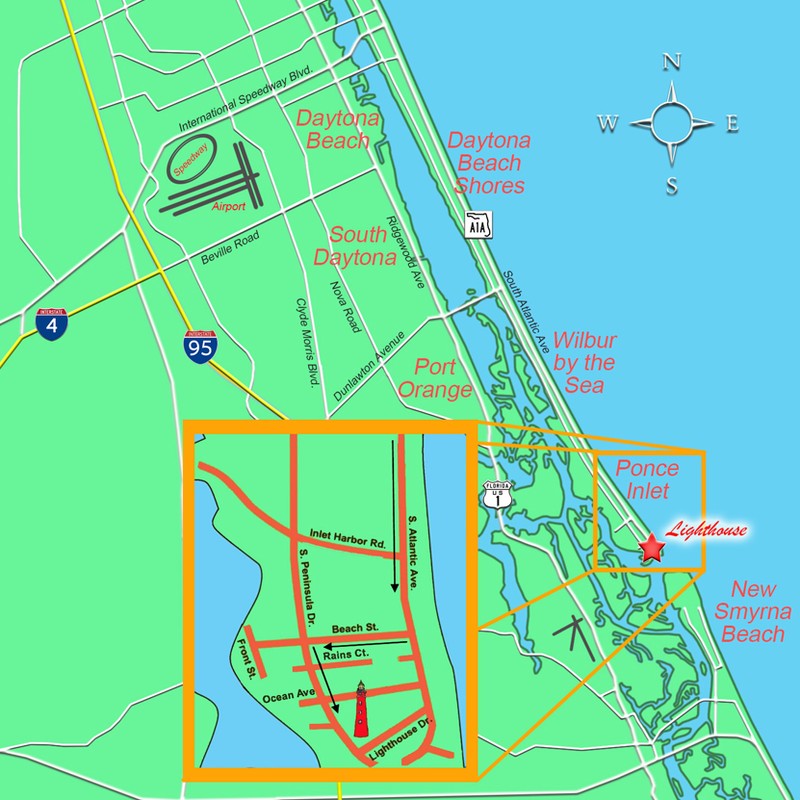
Backstory and Context
Text-to-speech Audio
The Ponce de Leon Lighthouse is the tallest lighthouse in Florida and the second tallest in the United States. The first lighthouse before Ponce Inlet was on the south side of Mosquito Inlet in 1835, it was abandoned due to many issues that arose with its location and architecture (Roberts, B., Shelton-Roberts, C). The new lighthouse was based on Light-House Board standard plans with modifications made for the specific area. The Light Station was designated a National Historic Landmark in 1998, making it one of only eleven lighthouses to earn this designation. Becoming a National Historical Landmark allows the light stations classifications to become public information. Included in the nomination for becoming a landmark are the classifications, description, historical significance, brief history, and the current use of the light station (Eshelman, R.E). All the original structures are in place when visiting the lighthouse and the museum allows insight on the significance of the history of this lighthouse (Henry, E.H).
The attack on Pearl Harbor is what closed the lighthouse to the public until the end of World War II. The light station was very significant during the war as it was used by the Coast Guard to keep watch for enemy submarines. There are numerous records, known as the keeper’s log, which takes into account the events that took place at the lighthouse during WWII (Henry, E). The Ponce Inlet light station was very essential during the war. Today the station and museum have a recreation of the radio beacon room as well as artifacts and interpretive panels about World War II in Florida (Henry, E). Ponce Inlet is considered to be the seventh most dangerous inlet on the Atlantic Coast due to the more than 70 shipwrecks that occurred (Taylor. T.W., Belcher, C., Liller, J). Included in the admission to the light station and museum is a location where rafts have arrived from Cuba after going through the troubling waters, showing how rough the water around the Inlet can be. The lighthouse light was discontinued in 1970. There was much vandalism that occurred over time until locals stepped in to protect the history of the station. Due to decades of restoration, the Ponce de León Inlet Lighthouse Preservation Association formed to manage and restore the light station (Eshelman, R.E); this is what led the lighthouse to become a National Historical Landmark. It is now one of the most complete light stations in the nation, with all its original buildings intact.
Beginning in 1883, with just 10 acres of land, the lighthouse has managed to remain standing until today with an exceptional amount of history surrounding it.
Cite This Entry
Brissa Loayza. "Ponce de Leon Inlet Lighthouse & Museum." Clio: Your Guide to History. April 23, 2020. Accessed April 14, 2025. https://theclio.com/entry/94453
Sources
Eshelman, R.E. National Park Service. (1997) Ponce De Leon Inlet Lightstation. National Register of Historic Places Inventory-Nomination. Retrieved from
https://npgallery.nps.gov/NRHP/GetAsset/NHLS/72000355_text
- The National Park Services provided a national historic landmark nomination for the Ponce de Leon Inlet Lighthouse. Included are the classifications, description, historical significance, a brief history, and the current use of the light station. This source is a primary source in every aspect excluding the historical significance area of the report. Each of these provides the best support for discussion. The category of source is a National Register of Historic Places Registration Form, which provides very useful information of the historical implications the Lighthouse had. The description aspect provides in depth information of the present and historical physical appearance, this is important to know its architecture and the existing structures that are contributions to the lighthouse. The descriptions include everything that can be physically seen and why it was built the way it was. The contributing resources are described in the same manner including the keepers’ dwelling, walkways, fences, and old house. Non-contributing resources are also included, as in the gift shops and refreshment building. The previously existing structures are in the same format. It concludes that all of the original structures which were located in the fence are still intact. Following this is the historical significance; this is the most important attribute of this source as it discusses why the lighthouse was important for many reasons including its association with federal governmental efforts to provide for safe transportation. A brief history is also provided in the report, this includes the area of the lighthouse, its multiple construction and refurbishments, and the costs throughout time. Ralph Eshelman’s report concludes with the current use of the light house, providing its significance to the modern day, considering it as a museum and a restored lighthouse open to the public since 1982. This information is significant because it provides primary information regarding the light station and the aspects that allowed it to become a National Historical Landmark.
Henry, E., (2007) United States Lighthouse Society’s. The Keeper’s Log: World War II at the Ponce de Leon Inlet Light Station. Retrieved from https://uslhs.org/sites/default/files/articles_pdf/Ponce%20de%20Leon%20WWII.pdf
- The article reprinted from the United States Lighthouse Society’s The Keeper’s Log from 2007 written by Ellen Henry is a secondary and primary source regarding World War II at the Ponce de Leon Inlet Light Station. In the introduction, it is depicted that in 1938 Lighthouse Service was being absorbed into the Coast Guard, and the Ponce de Leon Inlet Light Station would now be manned by Coast Guard personnel, the lighthouse keeper Edward Meyer enlisted in the service and remained Officer-in-Charge at the lighthouse. The article provides the events occurring at the lighthouse as WWII was drawing near. In 1941 the attack on Pearl Harbor closed the lighthouse to the public, for most of the war 12 men were stationed at Ponce Inlet and turned the principal keeper’s dwelling into barracks and required round-the-clock watches. The primary source section of this article is obtained by Neil Robinson who was stationed at Ponce Inlet early in the war and wrote to the Keeper’s Log about the lighthouse and life at the Coast Guard Station, referred to as the Surf Station. His letter included information of how the watch duties were divided, how they worked, and the living conditions. Blackouts were ordered due to German submarines being able to see the lights from the stations. The records regarding the end of the war were never found so the conclusion of the war and how it affected the light station aren’t known. The article concludes with how today the station has been restored and there is a recreation of the radio beacon room as well as artifacts and interpretive panels about World War II in Florida and at the light station. This article is very significant because it provides information about how essential the Ponce Inlet light station was during WWII as well as primary information of life for the Coast Guard at the station.
Henry, E.H. (2020) Lighthouse/Tower. (n.d.). Explore The Museum: What To See And Do. Retrieved from https://www.ponceinlet.org/Explore-The-Museum--What-To-See-And-Do-6-26.html
- The “Lighthouse/Tower” article from the Ponce Inlet website section of “Explore the Museum: What to See and Do” is about the history of the lighthouse and the characteristics that make up the tower. The Ponce Inlet is the tallest lighthouse in Florida, and the many restorations that occurred throughout time have been included in the article. There is a detailed description about the interior of the lighthouse including the current structures and the path that leads to the top. These descriptions also include the history of the locations and what would've been occurring in the past. As a secondary source, this source can be considered an article as well as have an impact as a museum category as the lighthouse has a museum. This helps find relevant historical implications that this source provides for the importance of the Ponce de Leon inlet lighthouse.
Roberts, B., Shelton-Roberts, C. (2020). American Lighthouses: A Comprehensive Guide To Exploring Our National Coastal Treasures. United States: Globe Pequot. Retrieved from https://www.google.com/books/edition/American_Lighthouses/W-HFDwAAQBAJ?hl=en&gbpv=1&bsq=ponce%20inlet&pg=PA181&printsec=frontcover
- American Lighthouses is a guide through the coasts historical lighthouses throughout the nation. Page 181 includes insight into the Ponce de Leon Inlet lighthouse as well as travel information. Sectioned by regions, the lighthouse is placed in the Southeast and Gulf of Florida. The information provided includes the history of the lighthouse such as the Inlet’s past name, “Mosquito Inlet”, the book goes over a storm that occurred in 1835 that caused the first lighthouse to collapse before ever being lit, and wasn’t rebuilt until half a century. In 1887, the lighthouse was much more impressive, standing at 175 feet, the book declares it at an “Olympian scale”, making Ponce the second biggest lighthouse in the country. The lenses of the lighthouse are described in great detail including the first-order lens that was switched after being electrified in 1933 for a third-order lens. The light was discontinued in 1970, as an economy measure, and reactivated in 1982 with an aeromarine beacon. Due to decades of restoration, the light station is one of the best preserved in the nation and is designated as a National Historical Landmark. The travel information provided depicts important information regarding the light station for visitors. This secondary source is significant because it shows how important the light station was and the preservations that took place that allowed it to become a National Historical Landmark. Being the second tallest lighthouse in the nation is very significant in that it deems it more important.
Taylor. T.W., Belcher, C., Liller, J., Association, F. L. (2020). The Florida Lighthouse Trail. United States: Pineapple Press. Retrieved from https://books.google.com/books?id=Y3jNDwAAQBAJ&pg=PA44&dq=ponce+inlet+lighthouse&hl=en&newbks=1&newbks_redir=1&ppis=_e&sa=X&ved=2ahUKEwiZ26HvvcPoAhUrTd8KHSa7DwIQ6AEwCnoECAkQAg
- Page forty-one to forty-five of The Florida Lighthouse Trail goes over the Ponce de Leon Inlet Lighthouse located in Ponce Inlet, Florida near Daytona Beach. Thomas W. Taylor is the expert contributor for this section of the book. The segment provides a brief history of the lighthouse and its significance, site facts, and directions from the last sections lighthouse being the Volusia Bar lighthouse, as the book follows a trail of lighthouses. The information provides includes details such as how Ponce Inlet is considered to be the seventh most dangerous inlet on the Atlantic Coast due to the more than 70 shipwrecks that occurred. The descriptions go in to discuss how the location came to be, being that there was a gap between St. Augustine and Cape Canaveral. There is in depth history about the construction of the tower and its difficultness due to the rough waters. At the beginning of World War II it became a Coast Guard base to keep watch for enemy submarines. The lighthouse was discontinued in 1970 and due to vandalism the Ponce de Leon Inlet Lighthouse Preservation Association formed to manage and restore the light station. Over four decades, the area was restored and became a museum. According to the book, the light station is one of the most complete light stations in the nation, with all its original buildings intact. In 1972 it was placed on the National Register of Historical Places, and in 1998 was declared to be a National Historical Landmark, the first in Florida. The book ends the section giving gratitude to Ann Caneer, a volunteer who became the executive director. The site facts include information regarding the construction, dates including when it was first lighted, numbers such as the height and number of stairs being 213, and information regarding the museum such as hours and prices. This is very significant because the secondary source provides a very in depth historical analysis of the light station and gives insight into how remarkable it is, the site facts provide important information that can be useful for researchers interested in the light station.
https://www.ponceinlet.org/Lighthouse-Tower-6-56.html
https://www.ponceinlet.org/Lighthouse-Tower-6-56.html
https://www.ponceinlet.org/Explore-The-Museum--What-To-See-And-Do-6-26.html

